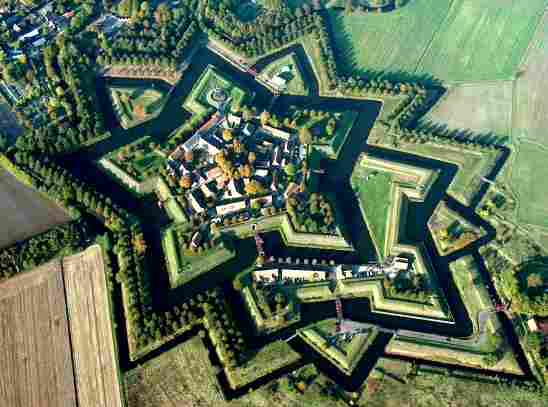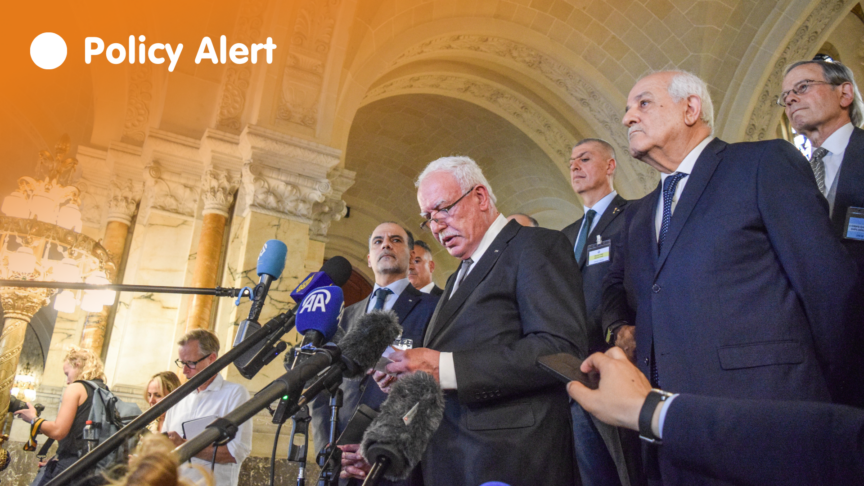EU’s Borders and Neighbours
The post-modern EU can learn from the medieval concept of borders
Jan Zielonka argued in his book “Europe as Empire”
that Europe is becoming a neo-medieval empire with ‘overlapping authorities,
divided sovereignty, diversified institutional arrangements, and multiple
identities’ with ‘fuzzy cultural, economic and political borders between the
enlarged Union and its new neighbours further east and south east’. Indeed, the
medieval parallel is useful in thinking about
borders, but a more accurate comparison is probably to think about medieval
fortresses, not borders.
Exporting border controls
A fortress has multiple lines of defence – a dungeon as the hard nucleus and
defensive walls, but also external fortifications such as ditches or earthworks
(see a formidable
fortress, left). The EU has been developing a similarly multilayered system of
border management and protection with elements of outside fortifications. With
the Schengen area as the dungeon, and the new EU member states, not yet in
Schengen but already separated from the outside world by a strong visa wall,
the EU has started to build outside fortifications.

The EU is as keen to engage in border management cooperation with its
neighbours, as it is sceptical of facilitation of trade or visas. The EU has
currently deployed four EU operations in its Eastern and Southern
neighbourhood, and three of them are border assistance missions – the EU Border
Assistance Mission to
and
tiny EU Border Support Team to
Moreover, when in spring 2008 the EU Special Representative for South Caucasus
put forward possible ways for the EU to step up its engagement in the conflict
region of Abkhazia, these also focused on border management dialogue. In many
ways the EU is exporting its preoccupation for illegal migration, trafficking
and organised crime to its neighbours.
To make sure EU border missions are important for making its neighbourhood a
better place. But the EU’s export of border controls has to be complemented
with similar activism on trade and visa facilitation, which are its neighbour’s
true priorities. There are many things a post-modern Europe can learn from medieval
as a technical solution to border controls is one thing. But the EU has to
learn more from the medieval concept of borders, as well. Not how to manage
defences, but what borders are and how to manage borderlands.
Borderlines vs borderlands
The notion of “borders” has many meanings, hence the proliferation
of related terms such as frontier, boundary, borderland, limes, rim etc. A
border can be a fixed line of demarcation. A borderland or frontier are more
difficult to define. They imply the existence of grey transitory area between
one jurisdiction to another. As in medieval times borderlands can be ‘a
relatively undeveloped, thinly populated, outlying zone or rimland, a marginal
region into which an advanced civilization introduces colonists as permanent
settlers’ (The
Frontier in Medieval History). Or they can be some kind of cross-roads
where multiple languages, currencies, religions and ethnic groups interact,
mingle and prosper (think of
Vojvodina or the
Conceptually borders and frontiers are antonyms. In the last century and a
half modern borderlines have destroyed many borderlands. Passports, currencies
and visas have relegated frontier regions to symbols of divisions, not
cross-roads. The fixed borders of nation-states were set to delineate cultures,
languages, currencies, and mobile telephony operators, not mingle them. In
frontier regions people interacted, multiple currencies circulated, overlapping
sovereignties were clashing, while locals spoke easily two-three languages. In
many ways the “fixed, durable and inflexible requirements of borders clash with
the unstable, transient and flexible requirements of people” (Medieval Frontiers:
Concepts and Practices)
The EU’s relationship to borders is double-edged. While the EU has been
eliminating borders inside
outside borders were becoming increasingly restrictive. Witness the example of
two of EU’s Eastern neighbours:
and
Just a few years ago these countries had visa-free regimes with the
Europe joined the EU, there is no single country to the West of Ukraine and
the citizens of these states can go without visas. They can travel easily only
to the post-Soviet space. And there is no stronger anchor in the increasingly
authoritarian post-soviet space than people’s inability to travel, study or do business
in the EU. Thus EU’s
visa policies are easily cancelling many of the expected political,
economic or cultural effects of the European neighbourhood policy. EU’s soft
power is in fact draining in the queues in front of the EU consulates in
Reconceptualising
the debate on EU’s borders might help. Today the intra-European debate on
borders is either focused on enlargement (‘Should
or
join the EU?’), or on border-management (‘how to make the defensive
fortifications stronger?’). But the EU should equally re-think the way it sees
its borders. Shifting from the notion of borders as demarcation lines, and
symbols of exclusion, to the reality of frontiers – more open regions, where
people and cultures mingle will make post-modern Europe learn a good lesson
from medieval
not be just about fences, but about management of openness and interaction.
The European Council on Foreign Relations does not take collective positions. ECFR publications only represent the views of their individual authors.


